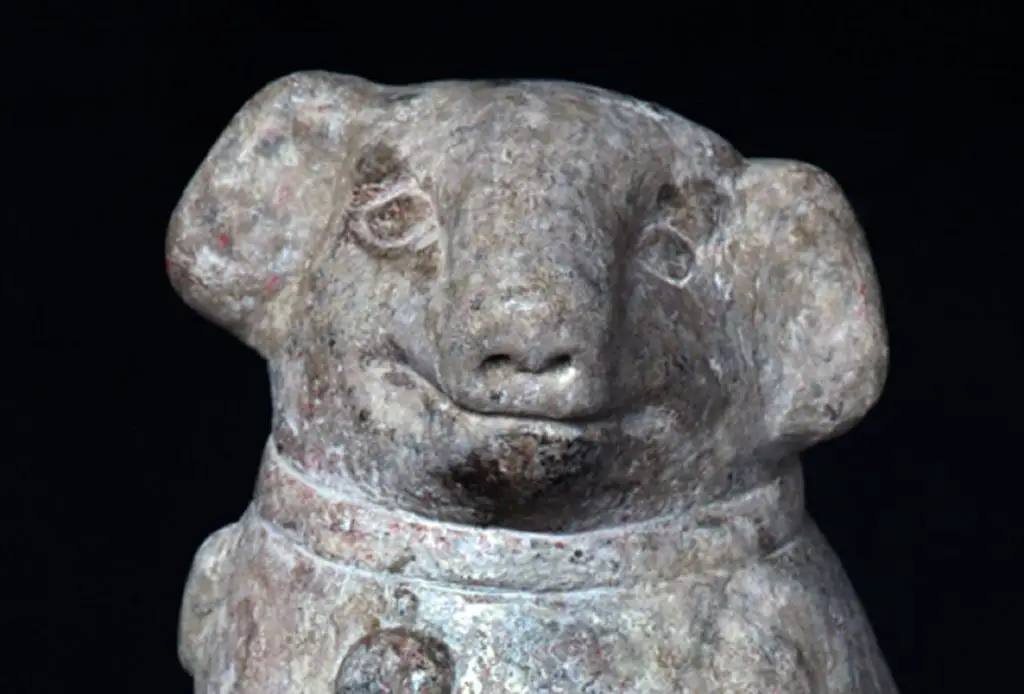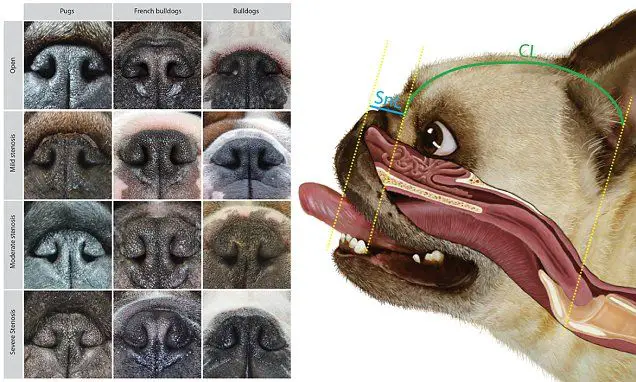Introduction
The pug is one of the oldest breeds of dog and has a fascinating history. These small, wrinkly-faced dogs originated as companion pets in ancient China over 2,000 years ago, where they were bred to be lapdogs for Chinese emperors. According to the American Kennel Club, pugs were highly valued by Chinese nobility during the Shang dynasty.
Pugs were first introduced to Europe in the 16th century through trade routes between China and European countries. As they gained popularity in Europe, pugs became fashionable pets among nobility and the wealthy. The little dogs with squashed faces, curled tails, and charming personalities were favored by royal families across Europe. Their popularity grew steadily for centuries.
Today, the pug remains a beloved companion breed around the world. According to the American Kennel Club, the pug ranks 28th most popular breed in the United States.
Origins in China
Pugs originated in China over 2000 years ago, where they were prized by Chinese Emperors. According to the American Kennel Club, Pugs have roots dating back to 400 B.C. and most historians agree the breed originated in China where they were bred as companion dogs (Source). In ancient times, Pugs were highly valued by Chinese Emperors and the royal dogs were cared for by soldiers andcourtiers (Source). One theory claims that Pugs were originally bred by Buddhist monks in Tibet and their popularity spread to China before being adopted by Chinese nobility (Source).
The Chinese referred to these dogs as “Lo-sze”, which translates to ” Foo” or “Fo” dog. Pugs were often kept as pets of the Emperor in the forbidden city. Their ink black wrinkled faces and curled tails were considered features of beauty much revered by the Chinese (Source).

Arrival in Europe
Pugs were first introduced to Europe in the 16th century through trade routes between China and European nations like Holland, England, and France. These toy-like dogs quickly became popular among the nobility and aristocracy of Europe.
According to Wikipedia, pugs were brought over on ships from China and arrived in Europe in the 1500s (1). Their cute and amusing appearance made them prized pets, especially in noble courts. For example, the House of Orange kept pugs as family pets.
The trade between China and Europe via the silk route and maritime routes allowed pugs to spread across Europe. Their portability also enabled nobles and royals to easily transport them wherever they traveled. Over the next few centuries, pugs became more established in Europe through selective breeding programs.
Breed Standards
The American Kennel Club (https://www.akc.org/dog-breeds/pug/) and other kennel clubs recognize the pug as its own distinct breed. According to the AKC breed standard (https://www.akc.org/wp-content/uploads/2021/07/Pug-dog-Study-Guide.pdf), the ideal pug should have a square, cobby body with a deep chest and well-developed muscles. Its head should be large and rounded with a short, wrinkled muzzle. The coat should be fine, smooth, and glossy. Pugs come in fawn, black, silver fawn, or apricot colors. Their temperament should be even and happy, with a fun-loving attitude. The Kennel Club in the UK also provides specific parameters for the ideal pug in its breed standards (https://www.thekennelclub.org.uk/breed-standards/toy/pug/). By following these breed standards, kennel clubs aim to maintain the distinctive physical and behavioral qualities of the pug breed.
Physical Characteristics
Pugs have a distinctive physical appearance with many unique features. Some of their most defining physical traits include:
- Flat, brachycephalic (shortened) face – Pugs have a very short muzzle and flat face which gives them their signature squished look. This is due to selective breeding to shorten the length of the skull and nose.
- Large, round eyes – Pugs have very large, round, dark eyes that protrude slightly. Their eyes are prone to injury and various eye issues due to their shape and prominence.
- Curled tail – Pugs have a tightly curled tail that rests on their back. The corkscrew shape of their tail is another breed-defining feature.
- Stocky, compact build – These small dogs have a stocky, muscular build with a broad chest and relatively short limbs compared to their body length. Their stocky body gives them stability.
- Wrinkles – Pugs have lots of wrinkles on their face, especially on their foreheads. The wrinkles become more prominent with age.
- Black mask – Fawn and apricot pugs have a distinctive black mask marking on their face which provides contrast to their coat color.

The unique physical features of pugs like their flat face, curled tail, and stocky build set them apart from other breeds and are hallmarks of the Pug. These traits were selectively bred by humans to give Pugs their distinctive appearance.
Temperament
Pugs are known for being charming and sociable dogs with a loving disposition.1 They have an outgoing and playful temperament that allows them to form close bonds with their human families.2 Pugs tend to have a friendly temperament and get along well with people and other pets when properly socialized from a young age.3 They are loyal, affectionate dogs that aim to please their owners.
Pugs love being the center of attention and thrive when they are around people. They have a sweet, clownish nature and often make their owners laugh with their silly antics and facial expressions. While pugs can be stubborn at times, especially during training, they are not an aggressive breed. Their gentleness and laidback attitude, combined with their playfulness, make them wonderful family companions.
Health Concerns
Pugs are prone to various health issues, especially breathing problems and eye issues, due to their flat-faced (brachycephalic) head shape.

Brachycephalic Obstructive Airway Syndrome (BOAS) is common in pugs. Their shortened airways make breathing more difficult and can lead to noisy breathing, snoring, exercise intolerance, collapsing trachea, and more severe problems like fainting spells. Surgery may be required in severe cases to open up airways. Proper weight management can help reduce breathing difficulties (Source).
Pugs are also prone to eye problems like corneal ulcers and eye infections due to protruding eyes, insufficient tear production, and eyelashes rubbing on the eyes. Regular cleaning and medication may be required to manage eye issues (Source).
Care Requirements
Pugs require regular grooming and care to keep their coat and skin healthy. Their short, fine coat sheds moderately year-round and more heavily during shedding seasons. Weekly brushing can help remove loose hair and prevent mats from forming.
According to The Farmers Dog, pugs need weekly or twice-weekly brushing, and during the height of shedding season (summer), you may need to brush them daily to keep up with shedding and prevent mats and tangles in the coat[1]. Their facial wrinkles also need regular cleaning to prevent skin fold dermatitis.
Pugs have relatively low exercise needs, but should have at least 20-30 minutes of activity per day. Several short walks throughout the day are ideal to prevent overheating. Training is important for pugs to channel their energy and intelligence. Positive reinforcement training works best for this sensitive breed.
As indoor companion dogs bred for laps, pugs should not be left alone for long periods. They can suffer from separation anxiety if their people are away for extended times. Proper socialization at an early age can help prevent anxiety issues.
Popularity Worldwide
Pugs are one of the most popular dog breeds worldwide. In the United States, the American Kennel Club ranked Pugs as the 28th most popular breed out of 204 breeds in 2022 (source). The breed’s popularity grew rapidly in the late 19th century but declined around the turn of the 20th century before rising in popularity again in the late 20th century.
In the United Kingdom, Pugs were the 7th most popular breed registered with The Kennel Club in 2021 with over 4,600 new registrations that year (source). Their friendly temperament and compact size make them a popular choice in cities and apartments.
The breed’s global popularity extends beyond North America and Europe as well. Pugs can be found in many countries around the world and have gained a strong following of owners and breed enthusiasts drawn to their unique appearance and lively personality.
Conclusion
In summary, pugs originated as a breed in China centuries ago where they were prized by Chinese emperors. The pug was brought over to Europe likely by traders in the 16th century, and quickly became popular in various European courts. While the pug we know today descends from the original Chinese pugs, the modern pug breed standards were developed in England in the 19th century. This produced the distinct compact body, wrinkled face, and clownish personality that characterize pugs today. Over the centuries, pugs have gained admirers all around the world and remain a beloved breed in many countries for their charming, mischievous nature. Though pugs require special care and attention to their health issues, their devotion and comedic antics endear them to many owners. The journey of the pug from ancient China to modern times is a remarkable history that has produced one of the most unique and popular small dog breeds.

